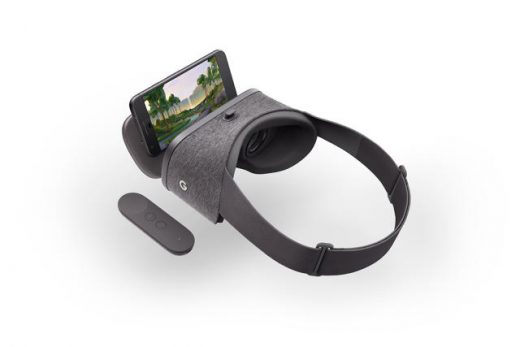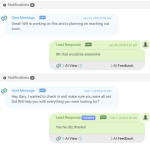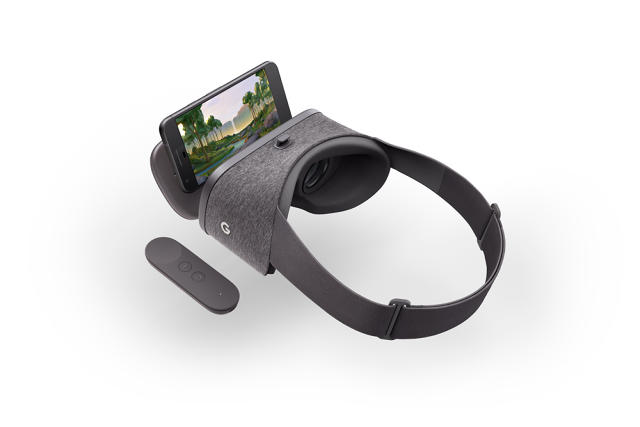The Company-Wide Effort That Brought Google’s New VR Platform Daydream To Life
Clay Bavor is really prone to motion sickness.
That wouldn’t be a problem, except for the fact that as head of all of Google’s virtual reality efforts, he spends a lot of time immersed in a technology that has been known to make some people feel nauseated.
Then again, he joked, sitting in a conference room in one of Google’s many indistinguishable buildings near its Mountain View, California, campus, his affliction—if you could call it that—might actually be a benefit as the tech giant prepares for the November launch of its new mobile VR platform, Daydream, along with an all-new VR headset and accompanying wireless controller, plus built-from-scratch VR versions of YouTube, Street View, Play Movies, and Google Photos.
“You’ve got to solve the motion sickness problem [in VR] or you can’t be comfortable for people,” Bavor told me during an interview late last month, wearing the Silicon Valley uniform of jeans, a black hoodie, gray T-shirt, and black-frame glasses. “And so it’s actually useful that I can be one of many litmus tests we have for: Have we done this properly? Is this comfortable?”
Google isn’t a newcomer to VR. Consumers have already purchased millions of its low-cost Cardboard headsets, which turn just about any smartphone into a virtual reality device.
But with some analysts expecting VR to become a $30 billion business by 2020, and with companies like HTC, Facebook-owned Oculus, Sony, and Samsung having made important strides in releasing higher-quality consumer systems over the last year, Google clearly wants a major say in the evolution of consumer VR—and it’s adopted an all-hands-on-deck approach to achieving that goal.
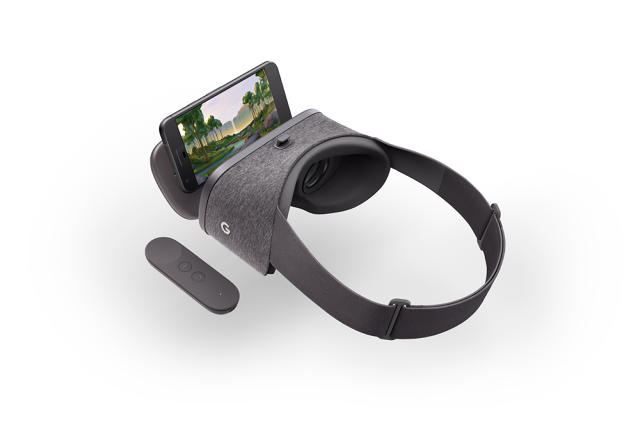
The best way to do that? Start from scratch with a new VR-friendly mobile operating system, known as Android N, as well as the first phone, the Pixel, to incorporate that OS and the $79 Daydream View, the first headset—and controller—that supports it.
“We saw the value in turning the smartphone you already have into a VR device with Cardboard,” Bavor said. “And so, the natural next place to turn was: What if you designed [the phone] from the outset to be deliberately for VR?”
With Daydream, Google is betting not only that it has developed a platform that enables rich VR experiences, but that with reference designs for both Android N phones and Daydream headsets and controllers, it can also put that system in millions of users’ hands with the help of numerous manufacturing partners.
“Our goal with both the Daydream software and hardware and reference design is to solve a lot of the hard problems in VR so that every one of our partners doesn’t need to reinvent the wheel,” Bavor said.
That may well work out, since Google says companies like LG, Samsung, HTC, ZTE, Alcatel, Asus, Huawei, and Xiaomi are developing Daydream hardware.
Given that Daydream only works with top-end Android devices, Google doesn’t expect the platform’s impact to be immediate. But within a year or so, the company hopes that handset makers will be also be incorporating Android N into mid-range devices that could be bought by millions of people around the world. With high-end tethered VR systems likely continuing to be too expensive for most people for the foreseeable future, Daydream could soon become the most utilized mid-quality virtual reality platform.
Daydream “won’t compete with the Vive,” said Anthony Batt, the cofounder and executive vice president of leading VR content producer Wevr. “But it will continue to become a better and better product as it’s adopted by [more developers]. I think the outcome will be wildly, wildly cool. And I think that’s good for VR as an industry.”
One of Google’s major aims with the Daydream platform has been to make it as accessible as possible to as many people as possible. That meant making it simple to use. Pop a Daydream-ready phone into the headset and it pairs wirelessly in seconds.
“Anyone, whether they’ve used a VR headset or not, they look at this and they know exactly what to do,” Bavor told me as he demonstrated it. “I’m not clipping the phone in here. I don’t have to position it exactly.”
That could be taken as a gentle poke at Samsung’s Gear VR, the Korean tech giant’s $99, Oculus-powered mobile VR headset, which requires users to snap their phone in precisely the right way or the VR system doesn’t boot up. The Gear VR also works only with Samsung phones, while Daydream was designed to support any manufacturer’s Android N phone and any company’s compatible headset and controller.
With Daydream, the idea is that it doesn’t matter if the phone goes in exactly the right way. Thanks to a system of sensors, the headset recognizes the phone automatically and auto-aligns what you see.
“There’s nothing you need to learn to do,” said Andrew Nartker, Daydream’s lead product manager. “How could somebody who’s not really fluent in these new technologies just jump right in and know what to do?”
All Hands On Deck
While Bavor’s team spearheaded Daydream, the project couldn’t have come to fruition without participation from all across Google—from building Daydream support into Android N to developing the headset and controller, as well as incubating brand-new native apps for many of Google’s most popular services.
“What’s so exciting for me about—call it Version 1 of Daydream,” Bavor said, “is that when you deliberately design the smartphone knowing that it’s going to be a device for VR, and you design the headset, you design the controller, and you design the apps all together, you get this amazing experience….You have these passionate leaders and experts—in Photos, in Play, in YouTube, in real-world imagery with Street View—really leading the charge on these.”
Although it would be tempting to conclude that the cross-company cooperation on Daydream was planned from the beginning, that’s not exactly how it went down.
Google has been building up its virtual reality portfolio for some time now, first with Cardboard and later with apps for Android and iOS including Cardboard Camera, Tiltbrush for the Vive, and the company’s ambitious high-end VR camera, the Jump. At the center of all that was Bavor’s nascent team, kickstarting the diverse efforts percolating across the organization.
Yet there was no “singular decision” to get everyone in lockstep around Daydream. Instead, the development of the end-to-end platform took place organically, Bavor explained.
“I think one of the things that’s pretty special about Google is that a person can go to basically any other person in the company and say, ‘Hey, I’m working on this thing and I’m excited about it. I might need some help. Can I talk to you about it?’ And the answer’s yes… There’s this assumption that at the end, everyone will figure out, OK, what is the right thing [to do for] Google here? And do that.”
In The Beginning, There Was The Android
Although Google has had various VR projects in the works for several years, its formal virtual reality team is fairly new, launching officially just last year. In their past lives at Google, a number of team members worked on Android, and that “natural cross-pollination” helped foster a solid relationship between Bavor’s group and the mobile OS team, he said. Incorporating VR support deep inside the Android group was the “obvious” place to start.
“There was a set of conversations between me and the senior folks in Android about, ‘Hey, let’s make this a thing,’” Bavor said, adding that those talks became “technical lead to technical lead, product manager to product manager—discussions about, ‘Hey, how do we make this thing work?'”
The technical challenges were daunting. For one, phones had to be perfectly aligned to do the kind of high-performance rendering that a quality VR system requires. Graphics took the highest priority, yet the phones had to know not to let an incoming call disrupt the rendering. You couldn’t do auto-alignment between the phone and the headset if you didn’t understand how to engage the Near field communication system that establishes the handshake between phone and headset. If an important problem wasn’t addressed, the VR experience could seem broken.
“It required 10 teams to get into a room and actually discuss how does [all] this work,” Nartker said. “It’s something no one team can solve. There’s not a lot of companies that can get those 10 teams into a room.”
Building On Google Apps
At launch, the Daydream platform will feature a variety of third-party apps from the likes of Hulu, Netflix, HBO, The New York Times, Major League Baseball, the NBA, and of course, several games.
But in order to be sure the platform got the strongest possible start, Google knew it had to put its own application might behind the project. That led to the creation of all-new VR versions of Street View, YouTube, Google Photos, and Play Movies, all of which offer users nearly endless amounts of content—a valuable factor when you consider that many industry observers think the single biggest hurdle to people’s ongoing use of VR systems is a lack of quality content.
Google doesn’t think it has that problem.
“We’ve often said we’ve accidentally been building one of the ultimate VR applications for the last 10 years with Street View and with Earth,” Bavor said. “What I love about the arc from Street View and Earth to VR is putting others in other places, connecting them with other places, connecting them with place information, experiential information, what it’s like to be there. We’ve been doing that for awhile.”
Still, while Street View for the Web and mobile give users something like a 360-degree environment to play in, that’s nothing compared to what is possible in virtual reality—and that’s why the Street View team built an all-new version for Daydream.
Starting out with numerous “tours” shot with Jump cameras—though all pre-existing content will also be accessible—Street View for Daydream drops users into the middle of places like the Taj Mahal and allows them to bounce around by aiming their controller at teleportation points throughout the famous landmark in Agra, India. It’s a far more immersive and smooth experience than what’s been possible with Street View in the past. Something that, while not exactly “reality,” per se, offers the potential of meaningful virtual tourism.
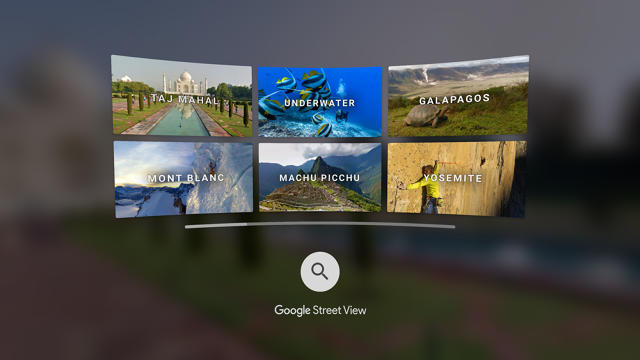
One time during a Street View for VR product review meeting, Andrey Doronichev, the group product manager for Google VR apps and games, found himself distracted by what he was looking at.
“I was supposed to be paying attention to UI details, and I did honestly try for the first 40 seconds,” Doronichev recalled. “Then I found myself in Prague, and I used to live in Prague, and I just started following this street to the Charles Bridge, where I used to walk all the time. Then, five minutes later, I hear, ‘Andrey, Andrey.’ I just lost myself in this city, it felt so real.”
Perfecting The YouTube Experience
Doronichev is obviously biased, but if you talk to him for any length of time, you’re going to hear about multiple cases where he lost himself in the experience.
Talking about the Daydream version of YouTube, which places users in an environment where they can control the size, placement, and even shape of the screen on which they’re watching videos, Doronichev explained what it can be like to go down the rabbit hole that YouTube offers.
“Thirty minutes in,” he said of a typical viewing session at home, “I find myself in all different poses on my sofa, laying down…positioning my screen right there at the top, or laying on my side. That’s something really hard to do with a TV.”
He said the goal with YouTube was to create “the best screen in your house” by rethinking one of Google’s most used apps for a VR environment.
One of the first things to consider was the environment in which people watch videos—or films or TV shows, in the case of Google Play Movies.
“With YouTube and Play Movies, you’ll see that the environment where you’re watching the movie and the positioning of the screen actually matters a lot,” Doronichev said. In VR, “it’s an environment you’re in, and that’s a very different perception. So you have to be comfortable. You have to like it.”
Doronichev’s team found there’s no simple answer to what kind of screen people would prefer for VR videos. Some people liked a curved screen up close to them that immerses them much like an IMAX does. Others wanted something smaller or at an angle. They concluded that users should have their choice of the screen’s position and size and the ability to move it to suit their needs.
“We managed to get all the best Google teams involved in this effort, contributing code and building this stuff,” Doronichev said. “You will see that across these applications—Play Movies, YouTube, Street View, and Photos—the way they converge in terms of consistency of user experience is really interesting because every team is exploring their own bit.”
And while each app team focused on different goals, there had to be consistency across the greater project. That’s why, Doronichev said, “We’re constantly talking together so we have a regular sync-up point where we share our learnings and those great ideas that one team discovers. They essentially propagate to all the other products.”
For example, the various teams needed to figure out how to visualize the Daydream controller into their apps. Some wondered whether showing it all was a good idea.
“When you visualize it, how exactly does it float,” Doronichev said. “Is it far away? Is it close to you? Where are you positioning it? Do you light up buttons when you touch it or not? Turns out, all those things matter. Those little things are what makes your product special and make it feel polished.”
The Street View team had come up with what they called a “fishing rod” visualization, where the controller is shown as the arced line that you aim at teleportation points. They had discovered that pointing a laser didn’t feel right, whereas the fishing rod approach encourages you to bend your elbow. Other teams decided to follow suit.

Fun With Google Play
When users strap on their Daydream headset, one of the first things many of them will do is try to watch their favorite movie on Google Play Movies. There won’t necessarily be VR movies but rather a more immersive experience of watching films thanks to the nature of the screen. Doronichev adds that there is also a sense that you’re in a warm, inviting place, like a “cozy” outdoor cinema.
Users will be able to watch any title in the Google Play library, while developers will be able to build new apps or repurpose existing ones for Daydream.
“On day one, when a Daydream developer submits an app, people in 190 countries can install it,” said Brahim Elbouchikhi, Play’s senior product manager for Google VR. “People in 132 countries can buy that app and spend money on the app, meaning [developers] can earn a living on Daydream” immediately.
Prior to joining Bavor’s group, Elbouchikhi worked on the Android team and was one of Google Play’s original product managers, one of the primary architects of the Play Store.
Having spent so much time on the creation of that marketplace, Elbouchikhi had an innate understanding of what it takes to build a successful app ecosystem. Still, in order to bring the Play Store’s success to VR, he leaned on his colleagues. A lot.
“We worked with people in London, Mountain View, and Tokyo to do this and it really was an awesome effort,” he said. “The relationships were essential here. I could not have done it without all the people on Play. I withdrew a lot from my social bank account.”
Virtual reality, at least in its consumer form, is a young technology, and despite immense amounts of press covering its rise, it’s going to take time before it goes mainstream. VR’s cousin technology, augmented reality, may well turn out to be a much bigger industry.
But if VR is going to become the massive business some believe it can be, it’s going to take successful platforms that millions of people use every day. It’s too early to say whether Daydream will become that platform, but having teams across Google devoted to it makes the prospect more likely. Daydream’s success, if it happens, will owe a lot to the company-wide collaboration.
“This is one of the incredible benefits of working at Google,” Doronichev said. “You have all these smart people focusing on different goals, but once you have something like a new platform coming out, all those teams work together to make it successful, each one contributing in their own way….Every time we roll out a new update, we’re making the whole platform, the whole user experience for the physical product better.”
related video: Will VR Go Mainstream?
Google’s Daydream View headsets will come in three colors: snow, slate, and crimson.

The Daydream View headset was designed to let users get into VR in seconds. It comes with a wireless controller.
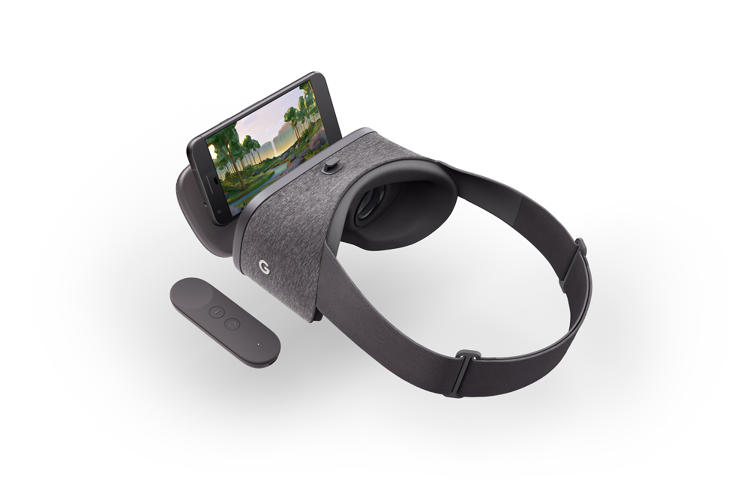
The Daydream View is 30% lighter than competing mobile VR headsets.

In Daydream Home, users can choose which apps they want to experience.
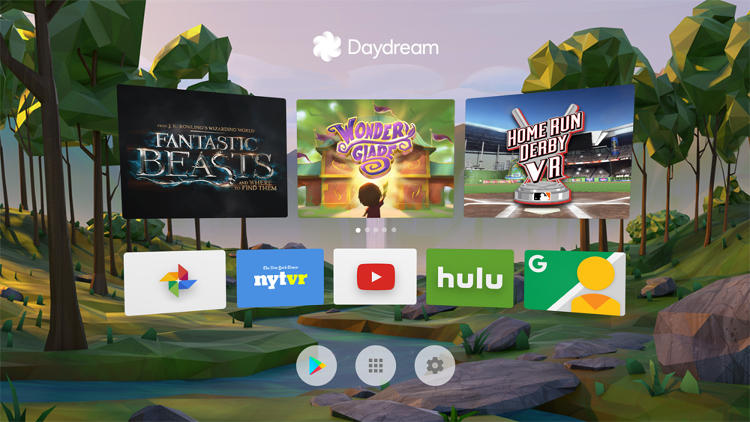
Street View for Daydream offers users virtual “tours” of locations across the world.
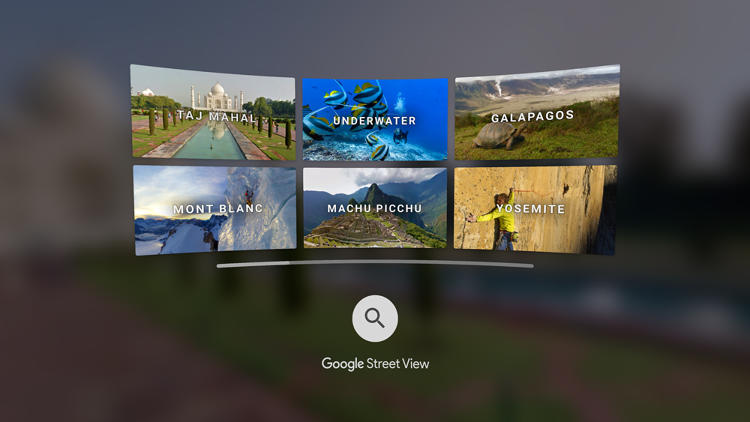
Using the Daydream controller, users can aim at teleportation points and jump around locations like the Taj Mahal.
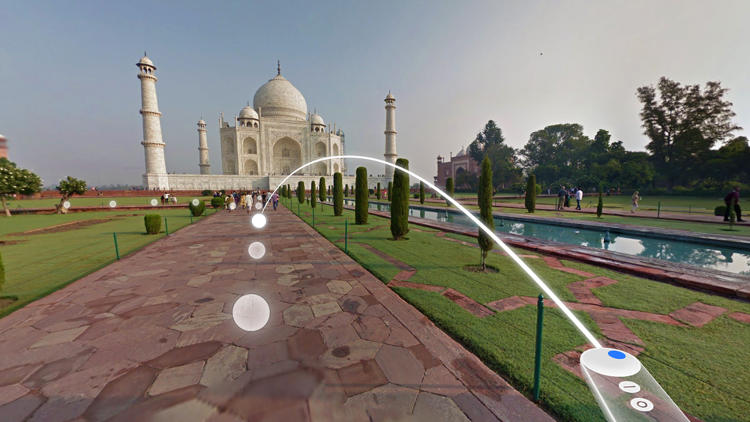
The Google Play Store is enhanced in Daydream.
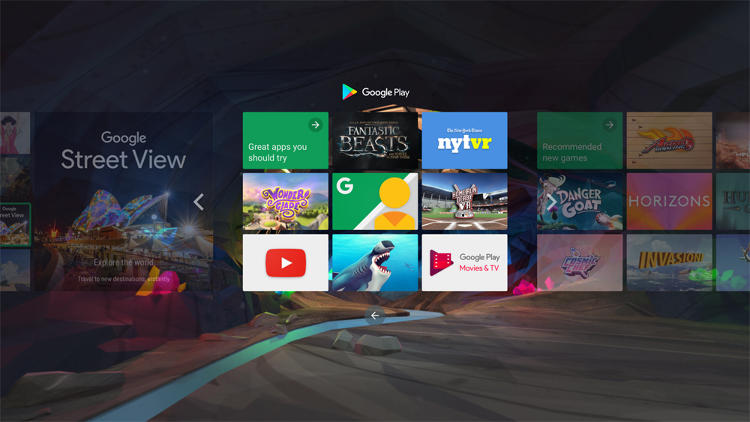
The VR YouTube app makes for an entirely new experience.
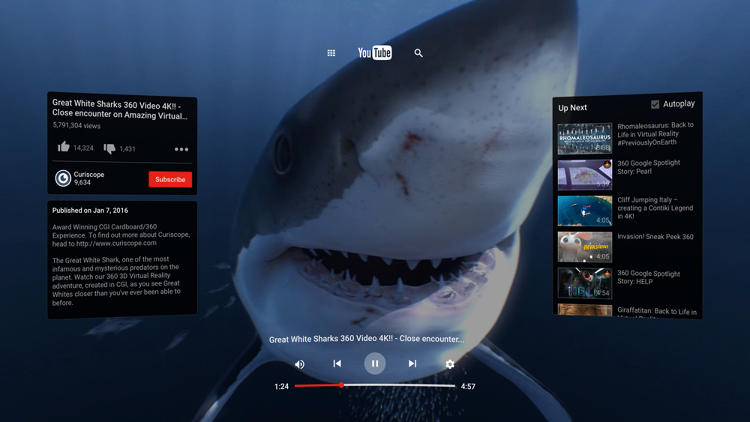
In Daydream, YouTube users will see videos shot with Google’s high-end VR camera.
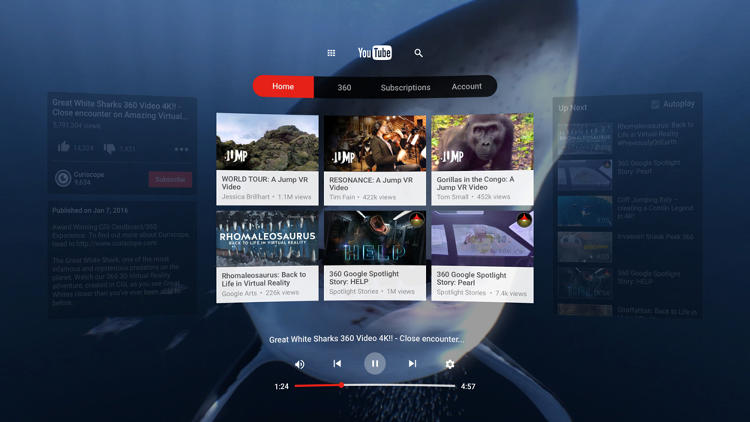
The VR Play Store lets users purchase any movie or TV show in the catalog.
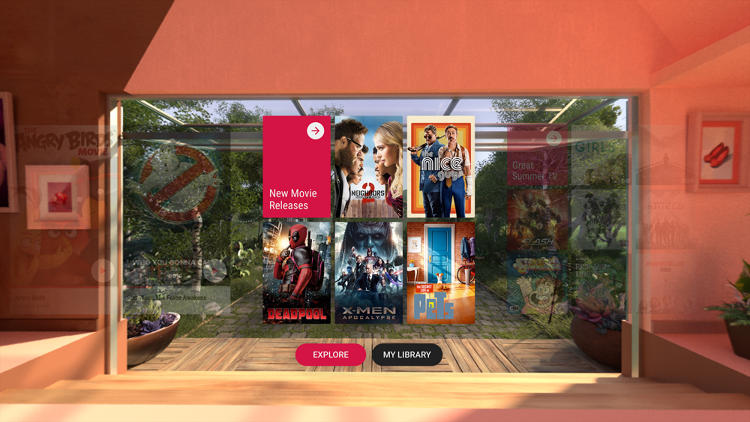
Fast Company , Read Full Story
(22)

